Biophilic Design Elements in Asian Home Decor
buddhaindooroutdoor.com participates in the Amazon Services LLC Associates Program, an affiliate advertising program designed to provide a means for sites to earn advertising fees by advertising and linking to Amazon.com.
Biophilic design bridges nature with man-made settings, making it more than just looks.
Making your home reflect Asian biophilic design can turn it into a peaceful retreat. This article offers creative ways to bring these global ideas into your space.
You’ll end up with a home that’s both sustainable and comforting, boosting your spirit daily.
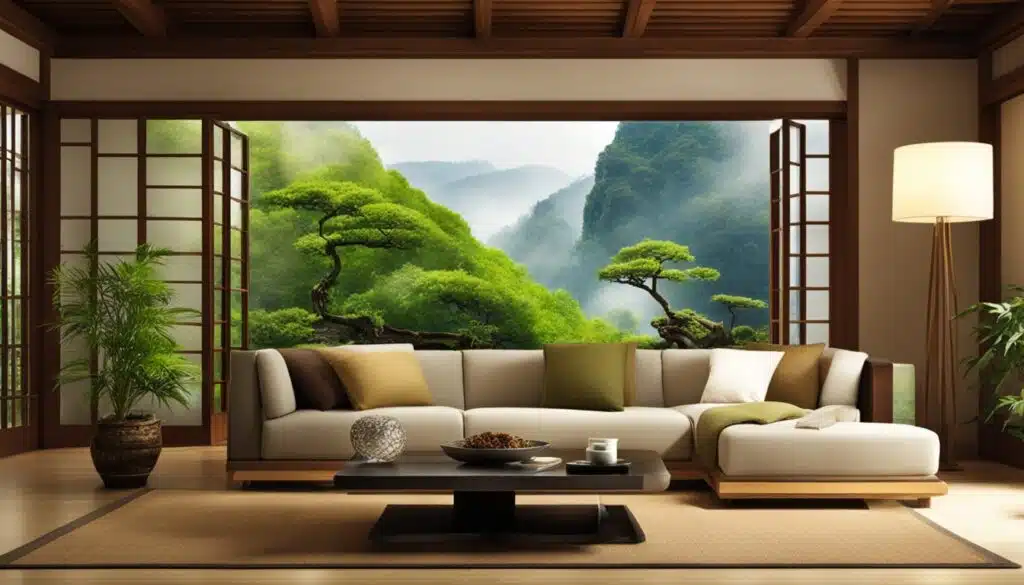
Table of Contents
Understanding Biophilic Design and Its Roots
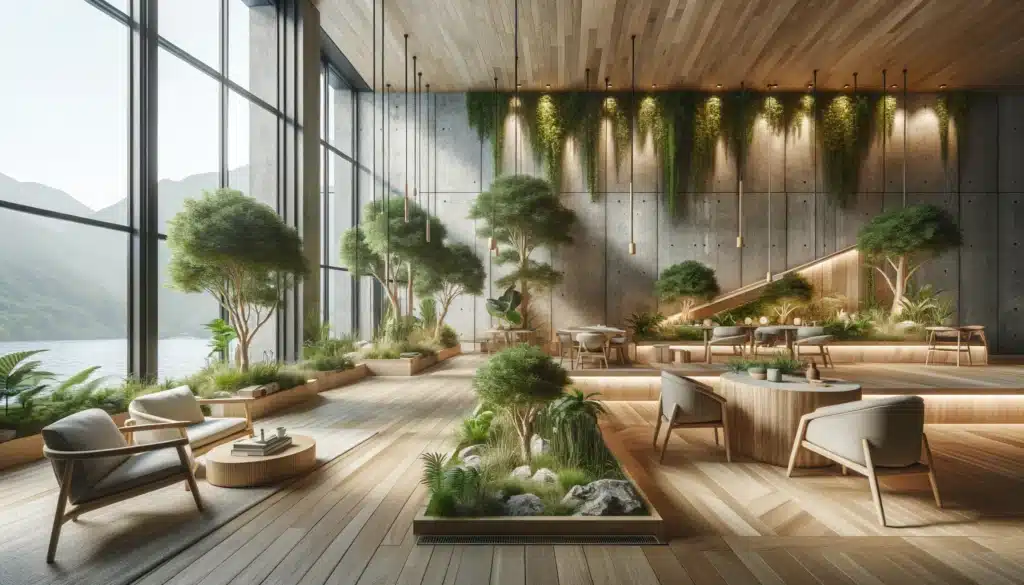
At the center of biophilic design is our natural bond with the environment. This connection has been around for thousands of years.
The word ‘biophilia’ shows how much we naturally want to connect with nature. This idea influences how we make our surroundings look and feel, and it affects our health.
Designers and architects use nature-inspired design in our living areas. They bring in natural light, use local materials, and follow nature’s unique shapes. This way, the line between buildings and the natural world gets blurry.
The principles are based on the Five Elements, each showing a side of nature:
- Fire: this brings light and warmth to spaces. It makes places lively and full of energy. It helps people feel joy and affection.
- Earth: this element stands for stability. It encourages diverse and balanced spaces and connects to the local culture.
- Metal: symbolizes nature’s structure and beauty. It highlights the organized patterns found in the natural world.
- Water: adds a calming and feminine touch with its soft shapes. It encourages us to wonder and think deeply about life.
- Wood: brings the energy of living things. It reminds us of nature’s power to give life and boosts our health.
Biophilic design uses natural themes extensively. You’ll see designs inspired by plants, trees, and animals. Patterns might resemble leaves, while structures can mimic trees. The variety found in nature, from birds to insects, is reflected in these spaces.
Spaces designed this way avoid linear shapes, preferring nature’s flowing forms. They copy nature’s way of solving problems. These designs use the earth’s shapes and natural evolution to make buildings stronger and more sustainable.
This approach also honors local history and culture. Studies show that biophilic design boosts interest in historical sites. People appreciate the blend of beautiful buildings and natural settings. This supports both cultural heritage and nature.
By combining cultural aspects with natural elements, biophilic design strengthens our ties to our roots. It’s not just about looks; it’s vital for our mental health and identity. This design philosophy underscores the importance of reconnecting with nature.
As natural spaces fade, bringing nature into our lives is essential. Things like sunlight, plants, and water make our homes feel welcoming. They answer our need for well-being and breathe life into cherished places.
Thus, biophilic design goes beyond decoration. It’s an ethical shift towards restoring our fundamental bond with nature. It touches the essence of what it means to be human.
How Biophilic Design Enhances Well-being and Productivity
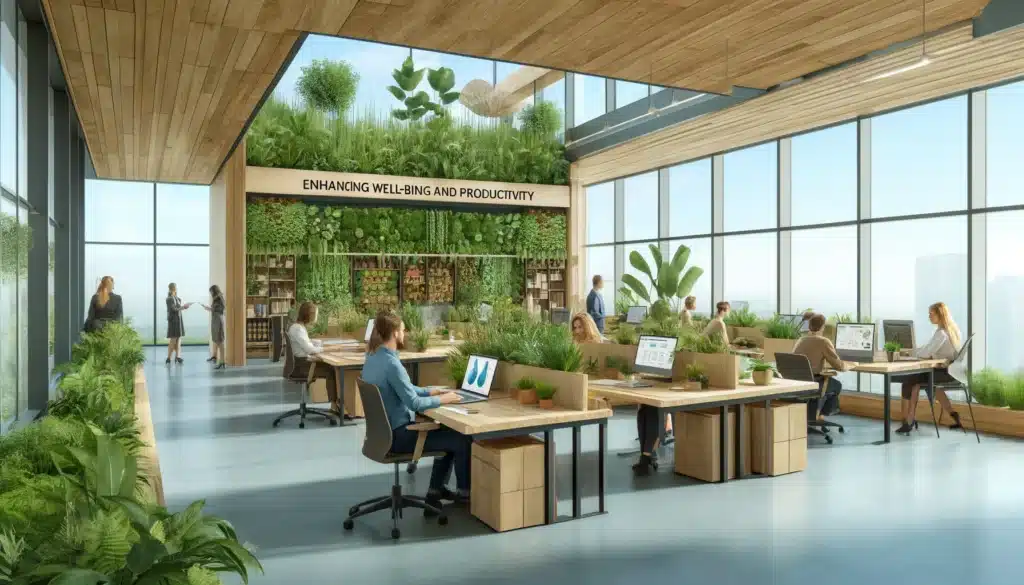
Combining nature with our built spaces does more than look good. It’s a smart move for better health and work performance.
Biophilic design brings the outdoors in, tapping into our natural wish to be around nature. This method doesn’t just make spaces look better. It answers the challenge of keeping us healthy while being efficient at work.
Improving Mental Health through Biophilic Design
Biophilic design plays a crucial role in boosting mental health. Seeing natural light, plants, and nature’s designs when inside can lower stress and make us feel happier.
This approach creates calm spaces for better moods and mental functioning. It shows how important a happy, productive life is to our well-being.
Biophilic Design Influences on Performance
Biophilic design is a game-changer for workplace performance. Research shows that ‘green’ buildings can double cognitive functions.
Adding nature to our work-spaces improves focus, creativity, and job happiness. This leads to more productive and imaginative employees. It turns our offices into places where people do their best work.
Case Studies: The Positive Impacts of Biophilic Spaces
Schools and hotels that embrace this design see better student grades, fewer sick days, and happier guests. These examples show how biophilic design boosts health, performance, and even the economy.
Biophilic Design Elements in Asian Home Interior Design
Embracing Asian home interior design brings a strong nature connection. This connection fills our living spaces with peace and balance.
Such designs are deeply rooted in cultural traditions. They merge modern living with the natural world beautifully. Wood and stone bring nature’s calm into our homes. This mix is both timeless and modern. Let’s explore how Asian homes use nature not just for beauty, but for wellness too.
Designs inspired by nature do more than just look good. They boost health and wellness. Adding indoor plants to Asian homes beautifies and cleans the air. Plants can cut air toxins by up to 87% in 24 hours. This matches EPA’s clean-air standards.
- Natural airflow designs, like in Singapore’s School of the Arts
- Placing plants inside and near windows to clean the air
- Windows at different levels make air flow naturally
- Using natural heat to move fresh air around
- Improving air quality with smart air purifiers
In Asia, biophilic design is getting popular, from Singapore to Japan. The Parkroyal on Pickering Hotel in Singapore is a great example. It has 15,000 square meters of green space, doubling its site’s area. This shows Asia’s commitment to green urban areas.
This design idea is all about health in our spaces. Studies show that using biophilic design can boost creativity, productivity, and mental clarity.
Workplaces with these designs see happier, healthier, and more creative employees. They take fewer sick days and do better at work.
Designing a home with nature in mind does more than make it look peaceful. It connects us to the earth, promotes good interactions, and supports mindful living. This means using the 14 biophilic design patterns.
These range from seeing nature to feeling its presence and enjoying natural light. It’s all about improving our wellness in the spaces we live in.
As we learn more about buildings and nature working together, we see the importance of biophilic design in Asian home interior design. It’s not just a trend. It’s crucial for a future where our homes improve our health and mind. It fits the philosophy of living in harmony with nature perfectly.
Incorporating Plants: More Than Just Greenery
Indoor plants are more than decoration. They bring wellness and harmony to your space. The trend of biophilic design is growing, as seen in social media searches.
People want to connect nature with their indoor spaces. This leads to homes filled with greenery, emphasizing nature. It highlights the use of natural materials and blending outdoor with indoor settings.
Biophilic design means integrating plants thoughtfully into your home. It enhances well-being and connects you with the environment. Let’s look at some ways to bring nature indoors effectively.
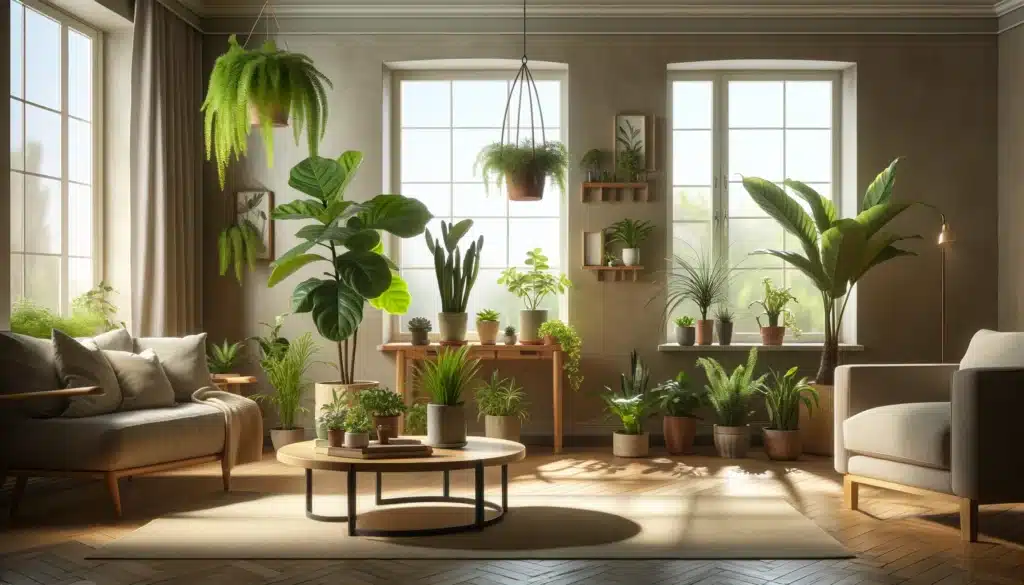
Finding Your “Green-print”
Your “green-print” is your plan for placing plants at home. Find spots with natural light and no drafts. Design experts suggest choosing areas that get plenty of sunlight. These spots are perfect for creating indoor-outdoor gardens.
Plant Walls and Vertical Gardens
Living walls are popular for adding nature to homes. They’re ideal for small spaces and urban homes. A vertical garden not only looks beautiful but also promotes sustainable living.
Optimizing Plant Placement for Growth and Aesthetic
Choosing and placing plants wisely is key. Match your plants with your home’s style and light availability. This thoughtful placement can create a personal retreat, perfect for relaxation.
| Trend | Impact on Home Design | Significance in Biophilic Design |
|---|---|---|
| Green Color Palette | Incorporation in cabinetry, walls, toilets | Creates a soothing, natural atmosphere |
| Natural Materials | Demand for natural stone, hardwood floors | Adds authenticity and a tangible connection to nature |
| Living Walls | Popular among millennials for indoor design | Visual and air purifying benefits |
| Indoor-Outdoor Continuity | Designs that include similar indoor and outdoor plants | Blurs the line between outdoor and indoor spaces |
To make the most of plants in home design, mesh these ideas with a good understanding of your space. This trend isn’t just about looks. It’s about making your home a haven of well-being.
Natural Light: Illuminating Asian Biophilic Interiors
Asian home decor focuses on the balance between indoor spaces and nature. Day lighting, a key part of biophilic design, strengthens this bond.
It makes your home look better and connects you with the health benefits of sunlight. Bringing in natural light can turn your home into a peaceful, wellness-promoting haven.
Maximizing Daylight in Your Home Decor
To highlight natural light at home, think about space layout and direction. Arrange furniture to let in as much sunlight as possible.
Choose light-colored walls and shiny surfaces to reflect more daylight. Use light window coverings instead of thick curtains to keep the sunlight flowing. With careful planning, your home will feel brighter and more vibrant.
Architectural Features that Enhance Natural Light
In your Asian-inspired home, include design parts that enhance sunlight. Add big windows and glass partitions for a view of the outdoors.
Skylights and high windows bring in sunlight without artificial lights. Consider using light shelves to spread daylight evenly through your space. This creates the peaceful and balanced atmosphere Asia is known for.
| Tips for Enhancing Natural Light | Architectural Features | Benefits |
|---|---|---|
| Use mirrors to reflect light | Skylights | Reduces energy costs |
| Choose pale color palettes | Translucent glass walls | Creates a visual extension of space |
| Incorporate shiny surfaces | Light shelves | Enhances light diffusion |
| Avoid blocking windows with furniture | Clerestory windows | Provides privacy while illuminating |
Organic Textures: Weaving Nature into Fabrics and Surfaces
Bringing nature into your home is about more than looks. It’s about feeling calm and connecting deeply with the environment.
Organic textures from natural fibers help create this bond, especially in Asian home decor. Using these materials in your home mixes tradition with a love for nature.

Choosing Natural Fibers for Home Textiles
Choosing natural fibers like cotton, linen, and jute for your home does more than just look good. It’s good for the planet and feels soft, making your home more comfortable.
Check out these interesting facts:
- Natural fibers can make you feel less stressed. People in Japan felt up to 51% less stressed after spending time in young conifer forests.
- Lavender used in natural products can reduce the need for pain meds after surgery by up to 15%.
- Looking at natural scenes can make you feel calmer after stress, improving by up to 27%.
Adding these fibers to your decor doesn’t just make your home look good. It makes you feel good and brings elegance found in Asian home decor.
The Beauty of Unfinished Woods and Stones
There’s something special about the rough beauty of unfinished woods and stones. Their unique textures feel and look amazing. Using raw wood and stone brings natural charm to your Asian-style home and offers health perks:
| Material | Health Benefit | Statistic |
|---|---|---|
| Unfinished Wood | Immune Function Increase | 23% – 34% |
| Stone Surfaces | Stress Reduction | 19% – 24% |
| Natural Environments | Enhanced Recovery Post-Surgery | 14% – 18% |
Choosing sustainable wood and stone for furniture and floors is not only Eco-friendly. It also supports biophilic design in Asian home decor.
Eco-friendly Furniture: Combining Sustainability and Style
Curating a stylish home with an Eco-friendly approach is easier now. Asian furniture designers have found new ways to combine style with sustainability.
When you choose furniture made from sustainable materials and produced ethically, you’re helping the planet. Every sustainable piece of furniture lowers carbon emissions by about 47 kg.
Materials That Speak to a Sustainable Ethos
Sustainable materials are key in Eco-friendly furniture. Bamboo is a fast-growing resource that doesn’t need much water or any fertilizer.
Cork and hemp are also great because they’re renewable and environmentally friendly. These materials make furniture look unique and suit the latest trends in design, like curved shapes and multi-use functions.
Designers at the Forefront of Eco-friendly Asian Furniture
Asian furniture designers focus on using sustainable and ethically sourced materials. Their creations combine traditional craftsmanship with modern styles. This approach ensures that furniture is not only Eco-friendly but also durable and full of history.
These designers are also embracing current trends, like colorful furniture, to add a personal touch to Eco-friendly homes. They’re setting new standards in furniture design. They focus on both environmental health and creating lively, dynamic living spaces.
The Role of Greenery in Asian Biophilic Design

People are searching for peaceful places to live and admire natural beauty. Asian home decor strongly adopts biophilic design principles because of this.
Greenery plays a big role, making homes look nice and helping people feel better. This section looks at how indoor plants and gardens bring beauty and comfort, touching our hearts and senses.
Integrating Indoor Plants in a Harmonious Layout
Asian biophilic design goes beyond just putting a plant here and there. It’s about creating a bond between nature and our living spaces. Indoor plants need to be placed thoughtfully so everything looks natural and planned. Choosing the right plants can clean the air and make homes feel calm.
Putting plants in the right spots is crucial. Plants need room to grow and should enhance a room’s look. For example, tall plants can frame a living room’s seating area nicely.
Bedrooms and kitchens benefit from certain plants too. Small plants in bedrooms or herbs in the kitchen can make a big difference.
| Location | Plant Type | Benefits |
|---|---|---|
| Living Room | Tall Ficus, Peace Lily | Aesthetic appeal, air purification |
| Bedroom | Snake Plant, Pothos | Stress reduction, improved sleep quality |
| Kitchen | Basil, Mint | Culinary use, natural fragrance |
Edible Gardens: A Functional and Aesthetic Choice
Edible gardens elevate greenery in Asian home decor to a new level. They let you grow your food, adding beauty and the joy of eating what you grow.
This aligns with biophilic design, mixing usefulness with the need for nature. Imagine having tomatoes or lettuce at home. Eating what you grow is not just healthy; it’s also exciting.
Edible gardens can be simple herb pots or complex hydroponic setups. They might be a small group of pots or the main attraction of a room. Having fresh greenery at home improves air and makes you feel proud and happy.
- Herbs: Easy to start with and maintain, herbs like cilantro, parsley, and thyme are perfect for kitchen countertops.
- Leafy Greens: Varieties such as spinach, arugula, and kale thrive indoors and can be harvested for fresh salads.
- Fruit-Bearing Plants: Small indoor varieties of strawberries or even dwarf citrus trees offer fresh fruit and a delightful fragrance.
Adding plants to your home is not just a trend. It’s a meaningful way to make our lives healthier and closer to nature.
Symbolism of Bamboo in Biophilic Asian Decor
In Asian home decor, bamboo symbolism stands for strength, resilience, and simplicity. It is used in design elements for both beauty and strength.
Bamboo as a Cultural and Design Element
Bamboo is a big part of Asian culture, valued for more than its practical uses. It teaches the balance between flexibility and stability. This is shown in how it sways yet stays rooted.
Its growth, with segments and a hollow inside, represents personal growth and humility. These ideas are important in Asian beliefs.
Bamboo Accents: From Furniture to Wall Coverings
Adding bamboo accents to your space honors cultural tradition and supports sustainable living. Bamboo turns into durable and comfy furniture: chairs, tables, beds. It provides a natural look with wall coverings, adding to the room’s natural charm.
| Design Element | Bamboo Use | Cultural Significance | Well-being Impact |
|---|---|---|---|
| Furniture | Bamboo chairs, beds, shelving | Symbolizes solid foundation and versatility | Improves space function and promotes rest |
| Wall Coverings | Bamboo panels, accent walls | Represents nature’s tranquility within the home | Reduces stress by connecting with nature |
| Decor Accents | Bamboo vases, frames, mats | Reflects eco-consciousness and craftsmanship | Induces peace of mind through aesthetic harmony |
| Light Fixtures | Bamboo lanterns and lamps | Expresses the interplay between light and shadow | Enhances mood and fosters a welcoming ambiance |
Bamboo in Asian home decor does more than look good. Studies show it can boost mental health and how well the brain works. People around bamboo felt 25% less stressed and performed 20% better in tests.
Wood in indoors can make well-being 35% better. These benefits show how good bamboo is for living spaces. Bamboo brings elegance and growth to your home. It has deep meanings in Asian culture and modern wellness.
Elevating Spaces with Water Features
Creating a peaceful spot in your home often involves adding water features. These elements are key in achieving the calm found in Asian home decor. They pull in our senses and connect us to nature. This is highly valued in today’s interior design.

Bringing the Serenity of Water Indoors
The sound of water, like a bubbling fountain or a gentle waterfall, makes any room inviting. Options range from small tabletop fountains to big indoor ponds within Asian home decor.
Design Tips for Integrating Water Elements
When adding water features, think about your room’s size and style. A well-chosen water feature can stand out yet fit seamlessly with your decor. A water feature can enhance your home, making it a place for calm reflection.
Remember to consider maintenance and safety, especially with kids or pets around.
Asian home decor is uplifted by water’s healing touch. During COVID-19, 43% of Americans turned to nature more, showing our deep need for natural elements.
Water features bring the outdoors inside. They offer wellness advantages noted by Paladino & Company, like better student outcomes and more vitality. This also adds tranquility to your Asian-themed decor.
Blending Traditional and Modern Asian Biophilic Designs
When you think about redoing your living area, mix traditional Asian design with modern Asian biophilic design. This mix is popular as people want to connect with nature. This blend brings together Asia’s timeless beauty and nature-loving biophilia. This makes spaces feel calm and full of life.
This combo is about mixing styles. The simple elegance of traditional Asian rooms meets modern needs for sustainability and nature connections. Each style’s details create a look that’s both natural and stylish.
Finding joy in this design means blending spaces cleverly. Imagine a Japanese rock garden or a winding path in a Chinese courtyard combined with modern green tech. These spaces show how old and new designs can work together beautifully.
- Use live plants to bring nature inside. Pick plants that blend traditional and modern looks.
- Install large picture windows that let you see nature outside.
- Use Skylights and sliding doors to bring the outside in. They invite sunlight and air into your spaces.
- Open windows to let in fresh air and nature sounds. It makes your home feel alive and connected to nature.
It’s also key to understand the big picture behind biophilic design:
| Design Aspect | Integration in Modern Designs | Relevance to Traditional Designs |
|---|---|---|
| Color Use | Rise of green color schemes | Historical presence in textiles and ceramics |
| Nature Integration | Indoor-outdoor living popularity | Centuries-old garden designs and open architecture |
| Texture and Materials | Return of wood and natural elements | User of organic materials and handcrafted objects |
But it’s not just about looks; it’s about feeling better. The modern Asian biophilic design focuses on living better by following the 14 Patterns of Biophilic Design. These patterns show how connecting with nature can improve our lives. This whole idea is about creating spaces that are good for us.
Cost-effective Biophilic Upgrades for Any Budget
Biophilic design doesn’t have to be pricey. With budget-friendly biophilic upgrades, you can easily make changes. Simple DIY projects and repurposing materials help create a natural, calm space. By using your creativity, you can turn your home into a biophilic oasis without breaking the bank.

DIY Biophilic Projects
Start DIY projects to add nature to your home. Make your own planters or a living wall for less. Doing these things makes your space unique and connects you with nature. This can make your home feel more joyful and healthy.
- Craft natural fiber home accessories like jute coasters or cotton throw pillows
- Build your own terrariums for a mini-ecosystem indoors
- Design a living wall with a pallet or hanging pots for a striking feature
Repurposing Materials for a Natural Aesthetic
Repurposing is a smart and eco-friendly choice. Turn wooden pallets into plant stands or glass jars into terrariums. Unused ceramics can be used for plants too. These items add a unique look to your home without costing much.
- Convert glass jars into minimalist planters or herb gardens
- Transform reclaimed wood into rustic shelving units or frames
- Repurpose old furniture into plant stands or garden fixtures
The interest in “biophilic design bedroom” on Pinterest jumped 100% from 2019 to 2021. A study by Interface found people spend 11% more time in nature-filled hotel lobbies.
Also, Paladino & Company observed students perform better and miss school less in such environments. These trends suggest that adding natural elements can improve your space and well-being.
| Statistic | Detail | Source |
|---|---|---|
| Search Increase for Biophilic Design Bedroom | 100% from 2019 to 2021 | Pinterest Business |
| Time Spent in Biophilic Hotel Lobbies | 11% more compared to less nature-forward lobbies | Interface |
| Educational Benefits of Biophilic Design | 5% test score improvement and 15% reduction in absenteeism | Paladino & Company |
Future Trends in Biophilic Asian Home Decor
Looking ahead, Asian home decor is embracing biophilic design more and more. Searches for “biophilic architecture” have jumped 150%.
Also, people looking up “biophilic design bedroom” increased by 100%. This shows more people want nature in their homes. Especially, the focus on landscape design in homes is growing. It’s now among the top five biophilic design trends.
Millennials are leading this movement with great excitement. They are adding living walls and zen spaces to their homes. These features make homes look better and feel more peaceful.
Natural stone is making a big comeback in interior design. It’s chosen for its beauty and lasting quality. People love its unique look and toughness.
Let’s look at how these future trends in biophilic design are shaping up:
| Design Element | Popularity Increase | Interest Group | Design Impact |
|---|---|---|---|
| Biophilic Architecture | 150% | General Populace | Integration of Nature in Structural Design |
| Biophilic Design Bedroom | 100% | Homeowners Seeking Sanctuary Spaces | Personal Spaces with Natural Elements |
| Landscape Design | 20% (1 out of 5 trends) | Urban Dwellers | Outdoor Features Brought Indoors |
| Living Walls and Zen Spaces | Not Specified | Millennials | Vertical Gardens and Meditative Areas |
| Natural Stone | Resurgent Trend | Interiors Enthusiasts | Timeless Appeal in Modern Settings |
The data shows a future where biophilic design is key in Asian home decor. These homes are not just about looks. They also offer a sustainable way to live closer to nature. Plus, they are a cozy refuge and a spot for renewal in our busy lives.
Conclusion
Asian home decor brings together sustainable living and nature-inspired designs. It uses biophilic design to enrich aesthetics and promote tranquility. This approach is key to boosting well-being and productivity.
Asian interiors combine greenery, natural light, and organic textures. These elements create spaces that are both spiritually and visually appealing.
A study shows a gap in resilience and self-esteem among female students, highlighting the need for positive environments. Stress, anxiety, and hopelessness are common in college students.
Research shows that nature-infused environments can improve emotional stability and promote healthy choices.
During social distancing, American youth turned to the outdoors for health and solace. By including nature-inspired decor, you can create a space that blends culture, art, and a love for nature. This reflects a philosophy important in our urban lives, where many face mental health issues.
Biophilic design offers numerous benefits for your home. It not only embraces Asian traditions but also meets modern desires for a refreshing, sustainable environment.
Source Links
- https://www.architecturaldigest.com/story/biophilic-design-ideas-on-a-budget
- https://journalofbiophilicdesign.com/journal-of-biophilic-design/the-ancient-amp-the-modern-luminous-spaces-biophilic-design
- https://www.linkedin.com/pulse/how-use-natural-shapes-forms-incorporate-biophilia-wangui-mwangi
- https://www.ncbi.nlm.nih.gov/pmc/articles/PMC8963554/
- https://blog.interface.com/en-au/biophilic-design-asia/
- https://www.mdpi.com/2075-5309/13/8/2020
- https://www.ncbi.nlm.nih.gov/pmc/articles/PMC9271008/
- https://www.hawaiilife.com/blog/biophilic-design-and-lifestyle-air-element/
- https://www.terrapinbrightgreen.com/reports/14-patterns/
- https://www.nar.realtor/magazine/real-estate-news/home-and-design/biophilic-design-helps-homeowners-connect-to-nature
- https://www.linkedin.com/pulse/embracing-nature-art-biophilic-design-interior-spaces-jnhzc
- https://www.archdaily.com/tag/interior-design/page/6?ad_medium=widget&ad_name=publications
- https://link.springer.com/10.1007/978-1-0716-0684-1_1034
- https://foyr.com/learn/furniture-styles-and-trends/
- https://www.ncbi.nlm.nih.gov/pmc/articles/PMC10650689/
- https://www.ncbi.nlm.nih.gov/pmc/articles/PMC9248534/
- https://www.bhg.com/decorating/lessons/expert-advice/biophilic-design/
- https://www.mindfulinteriorsbyelementsliving.com/biophilic-interior-design/
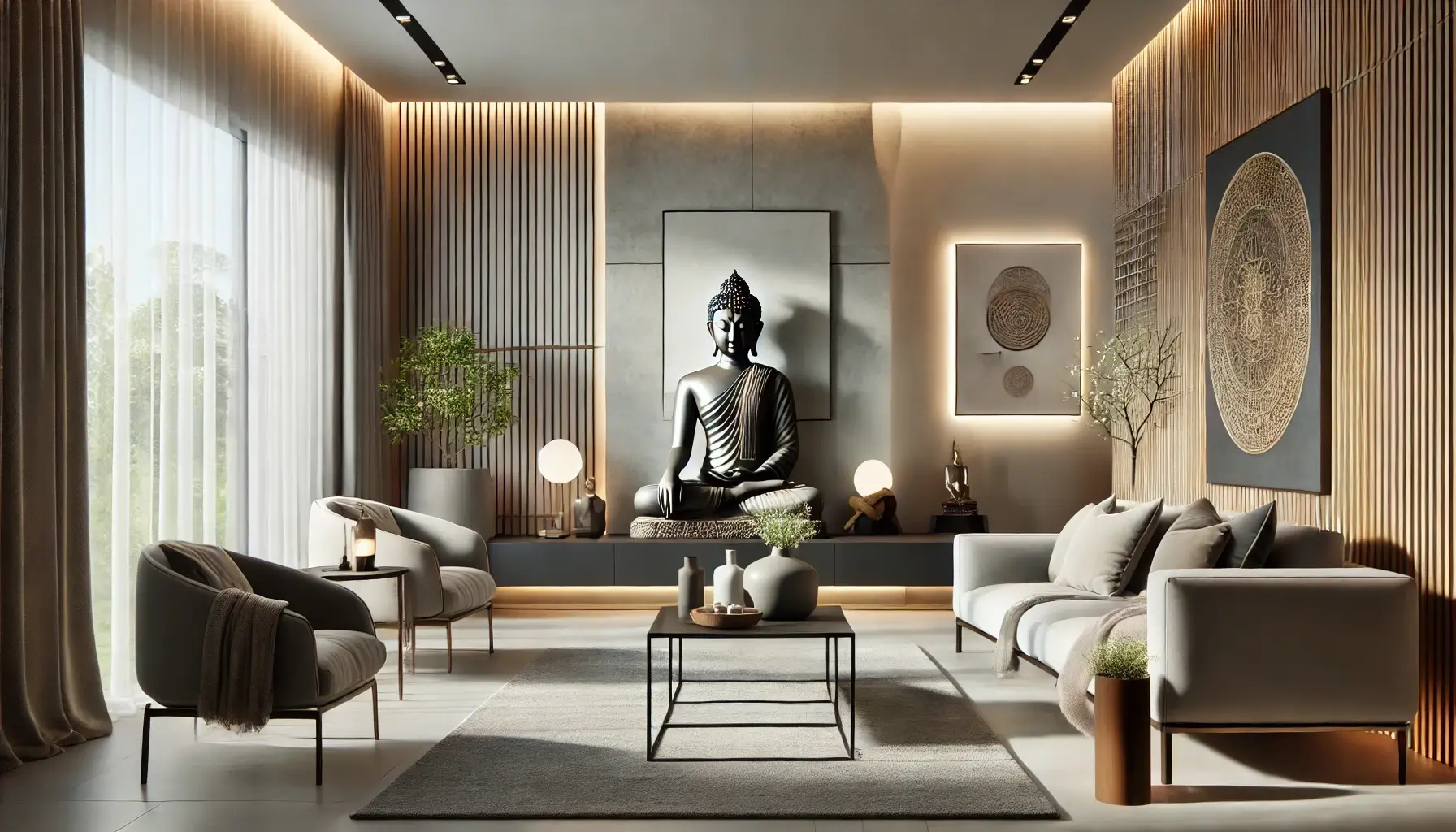
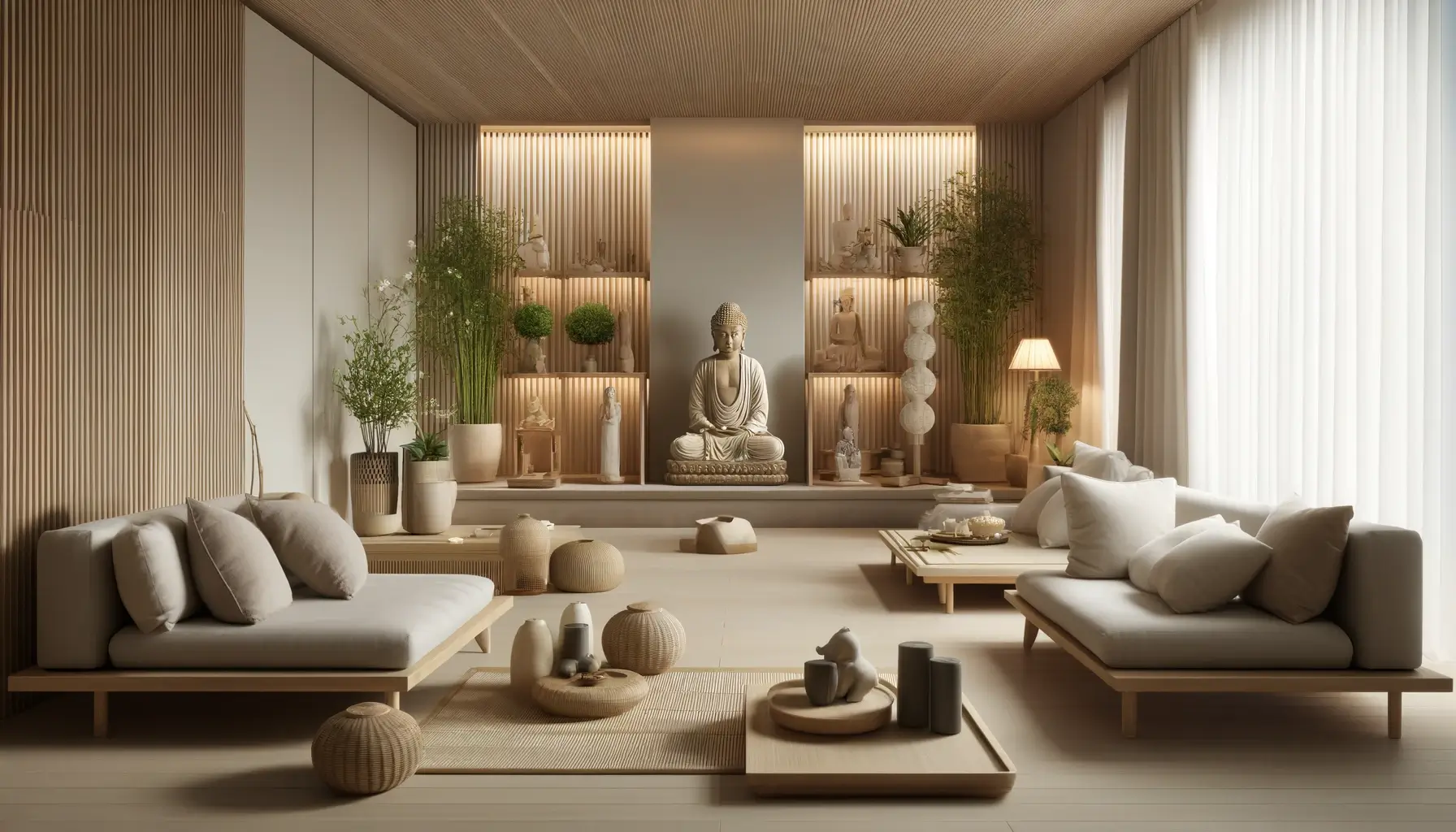
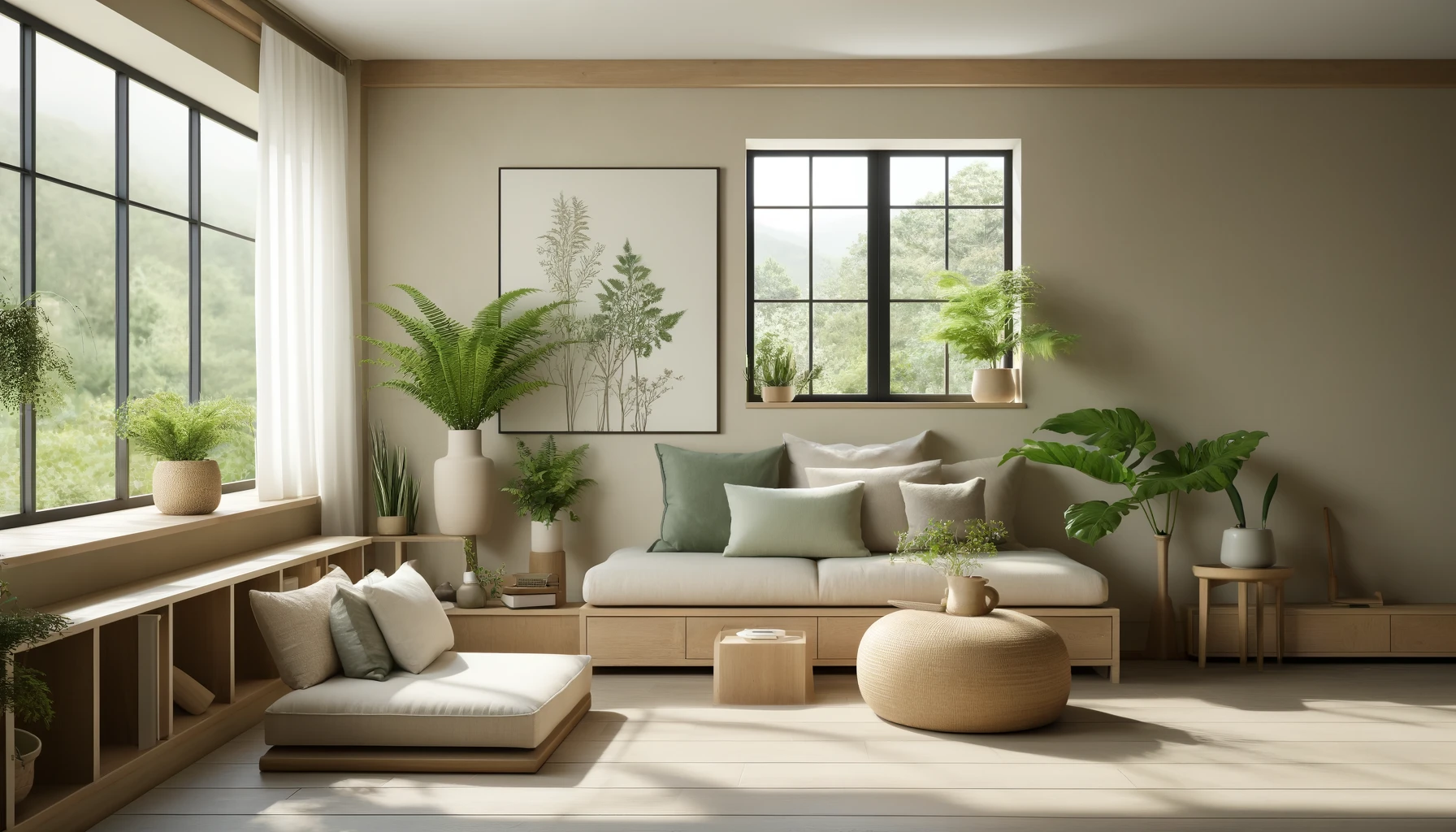
0 Comments